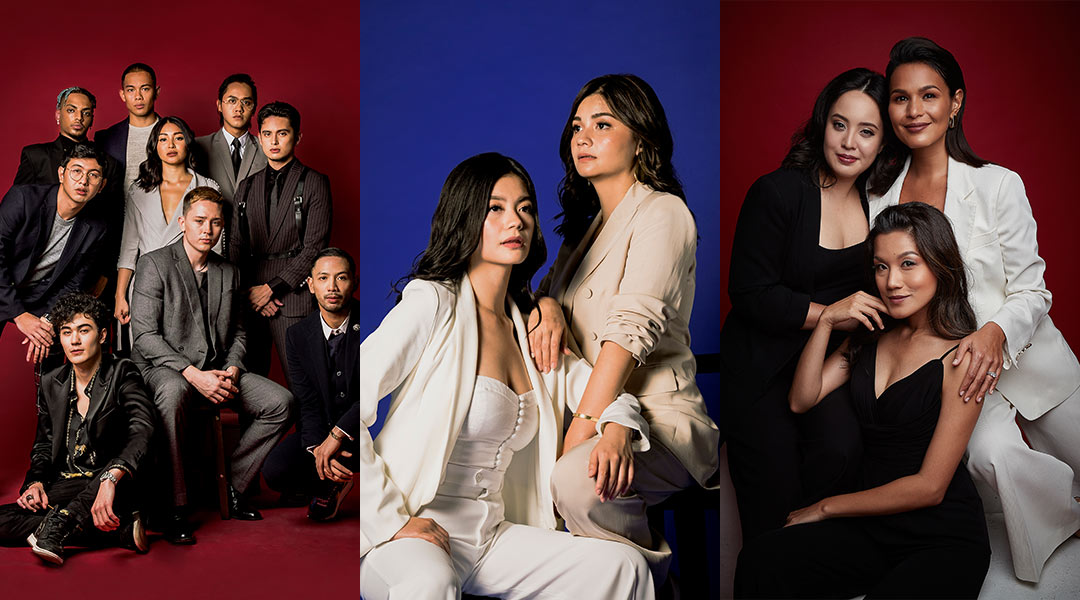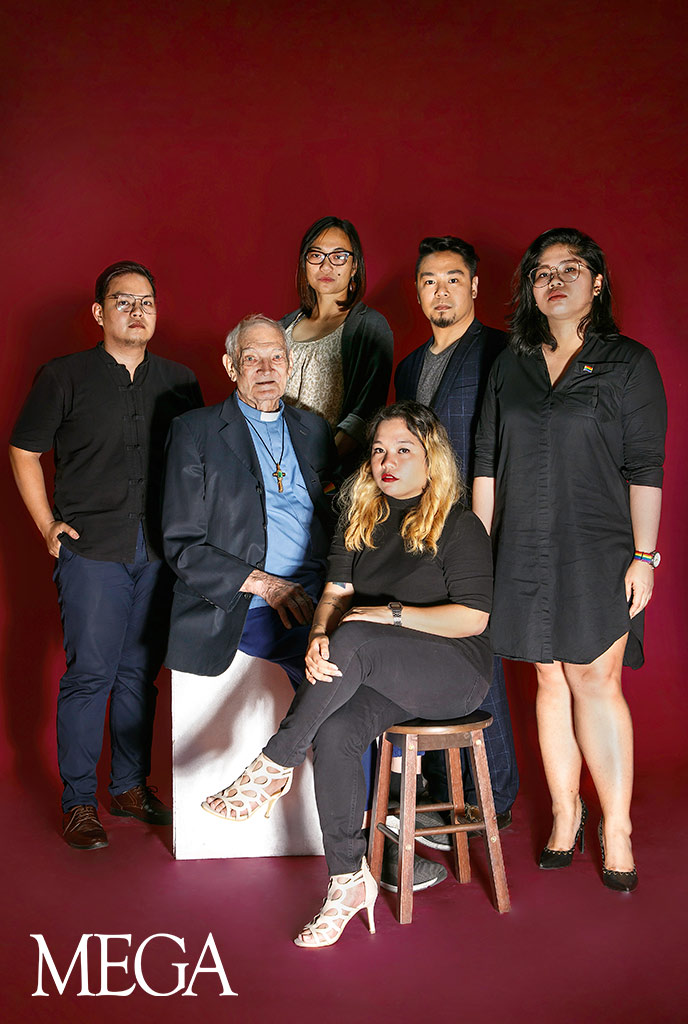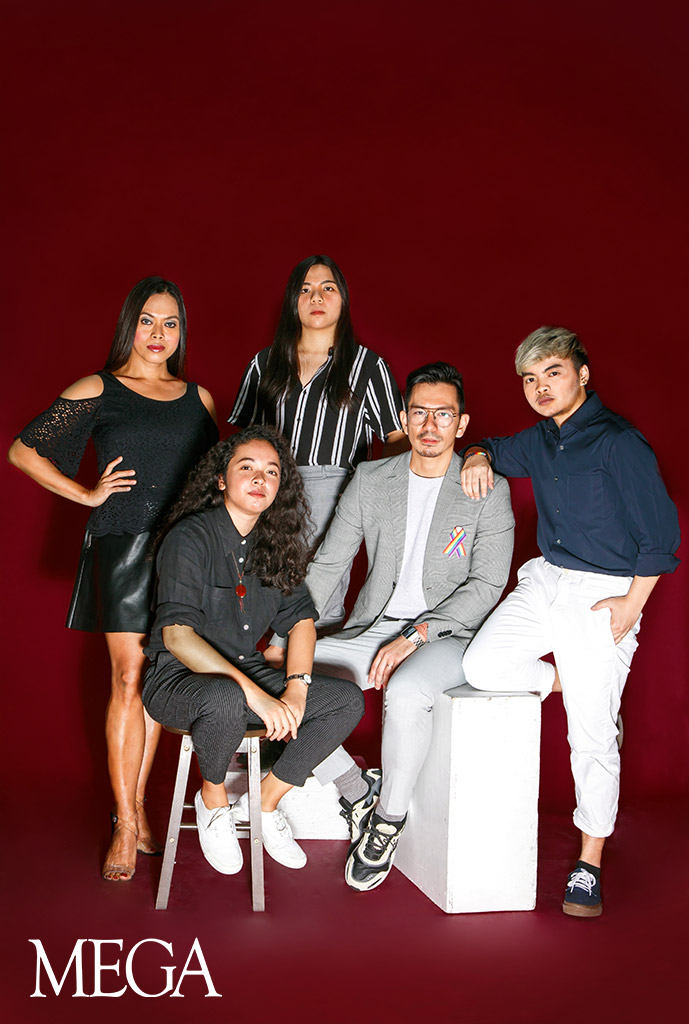Scouring many victories, milestones, and industries, this year’s crop of #NewPH awardees are changing the future of the Filipino one inspiring effort at a time.
Related: Meet The Game Changers, The Disruptive and Dauntless Men And Women Awardees Of #TheNewPH
Nico Bolzico
Argentinian Champion of Philippine Agriculture
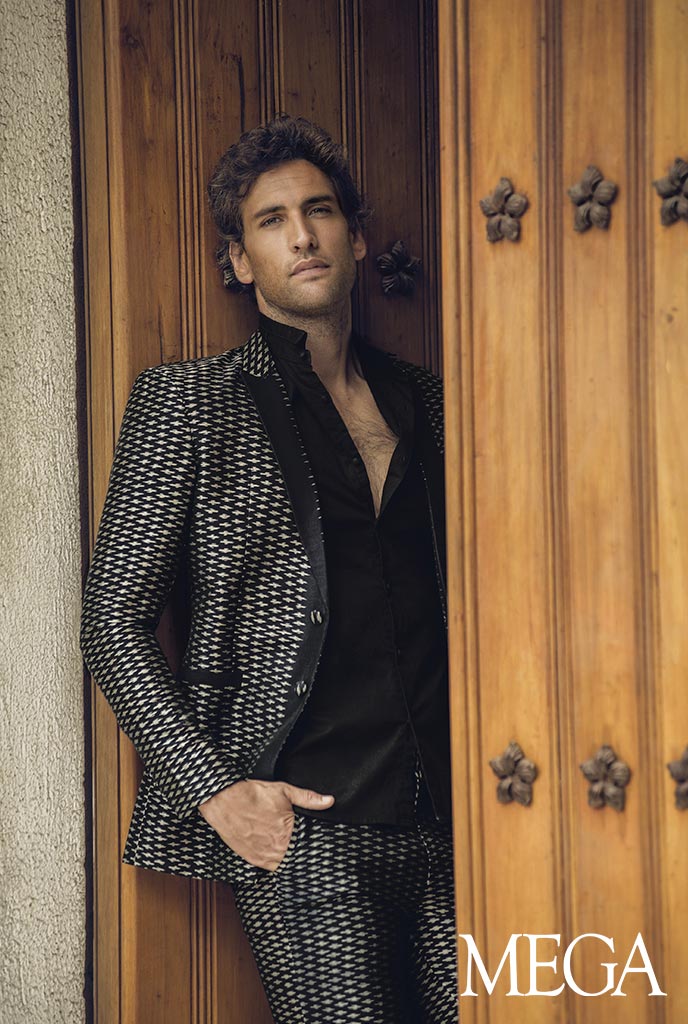
To the unfamiliar, there will be a slight case of dissonance when talking to Nico Bolzico. Make no mistake about it, this is actually more good than not. Imagine, here we have someone who is unmistakably foreign, but when he starts talking about Philippine agriculture, it is as if he has been tilling the land since birth. “Right now, I think the agricultural sector in the Philippines is one of those sectors that I’m used to taking care of. It’s a great sector, I think it has a lot of potential, [because it] is basically anything that you’ve touched comes from the land; it is a natural resource. But it’s one of those sectors that is not being taken care properly,” he says. “It’s the sector that we can give back the most from.”
From what was initially just a corporate posting, Nico Bolzico would eventually take root in the country, even at the suggestion of his father to see the potential of agriculture here. This was when LM10 was born, a company that intends to invest and elevate agri-business in the Philippines with innovative technologies, development of possibilities and prospects, further refining experiences in agriculture. With grit, tenacity, and an earnest desire to develop the potential in the Philippines, LM10 (an homage to his hero, Argentinian football deity, Lionel Messi) has grown and expanded into thriving ventures such as Bolzico Beef (importing protein from the family farm in Argentina), Vienovo Philippines (producing all natural animal feeds), Precision Agriculture (a subsidiary company that focuses on improving idles lands), and Genex Biotech Group (boosting dairy and beef production by bringing advanced livestock genetics to the country).
Nico Bolzico, a gaucho born and bred in Argentina, wants to see the Philippine agriculture sector be more self-sufficient and self-sustaining, relying only on itself to fulfil the needs of the country. “I want to see the Philippines to stop importing food. We should be self-sufficient in terms of food. We have a lot of resources, we have the potential, we have a lot of people, and we should be able to self-sufficient. It makes the country more efficient. Second, I want to see the Philippines as an agri-export country. When you export in just raw material, there’s no added value there, but if you produce some in the Philippines and you can export it,” he says. “We don’t just believe in giving, we believe in giving opportunities.”
It might seem unusual, especially coming from someone who appears to be from the outside looking in. But as it stands, Nico Bolzico is more steadfast in his desire for a better Philippines than many disgruntled citizens. While there is nothing to blame there, it does make his efforts more valiant and truly worth looking up to. If it takes this Argentinian with a Filipino heart see the Philippines stand on its own accord, then so be it. After all, a home is what one makes of it and for Nico Bolzico, he is home.—Angelo Ramirez de Cartagena
Mike Lavarez, Peabo Orilla, and Paulo Castro of Panty Monsters
LGBTQIA+ Superstars
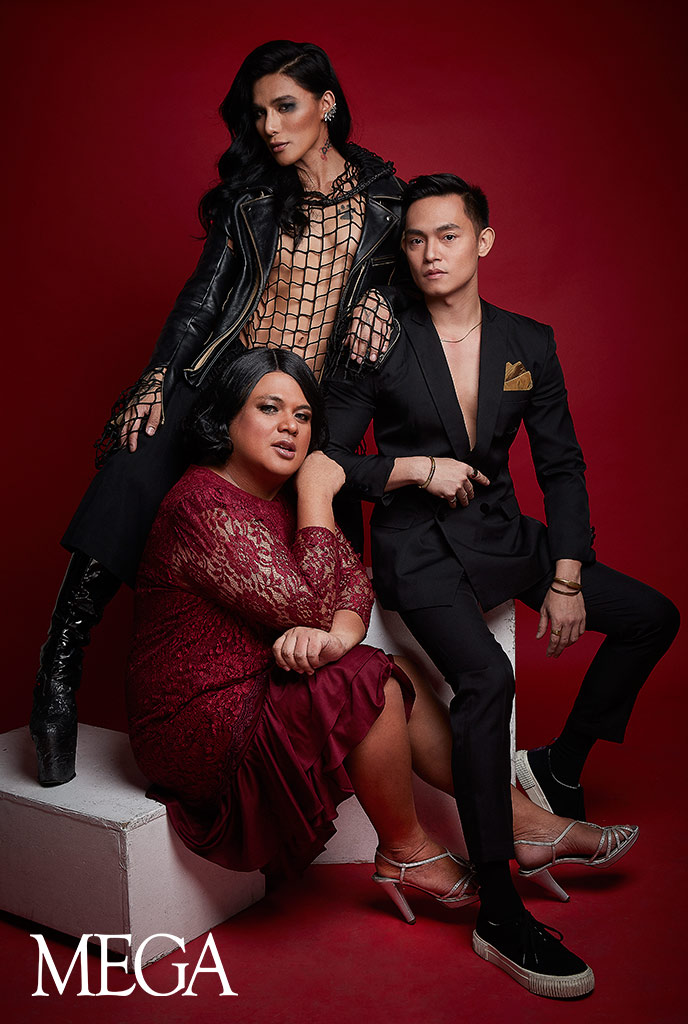
It has been said that nothing good happens at 2:00 AM.
While pop culture and literature has painted it to be a hot bed of bad decisions and questionable thoughts, this fraction of a time is also where all things lost and out of place find solace. This rings especially true for many souls who have gravitated to spaces over the past ten years where a motley crew of diverse and distinct individuals who form a nucleus of a chosen family called: Panty Monsters.
It wasn’t necessarily a conscious decision [to come together] in as much as it was organic. We just came together as ourselves and had fun. We’re punks and non-conformists at heart. So if establishments turned us away because of the way we looked, then we would make everyone feel welcome,” says Paulo Castro, the perennial mouthpiece for the group. “Inclusivity, authenticity and love were our protest. We dressed and stood out like sore thumbs, but we were (and still are) the most welcoming group of people you could ever meet. That was our biggest middle finger to those who made us feel left out. We were all outcasts who found acceptance in each other. We just wanted to make other kids feel the same.” Brought together by creative pundit Lotho Lotho ten years ago, the rest of Panty Monsters included Rcxy Bautista, Mike Lavarez, Nixon Marquez, Xtina Superstar, Darryl Recina, Peabo Orilla, and Jujiin Samonte, this group was their answer to establishments who wouldn’t let us in based on discriminatory, out-dated, LGBTQ-phobic dress codes. To be frank, a lot of the biggest establishments at that time were homo and transphobic. The goal was to create an unpretentious, safe environment for the gathering of like-minded people who enjoyed different types of music, and dressed however the f*ck we wanted.”
But it isn’t all fun and games for the Panty Monsters, where they now find a home at the luxury LGBTQ+ nightclub in Bonifacio Global city, Nectar Nightclub. The music of DJ Mike Lavarez is still pounding hard as ever, the witty and side-splitting commentaries of emcee Peabo Orilla is sharp as can be, and the overall nurturing soul of Paulo Castro is practically multiplying himself to make sure everyone is seen, heard, and loved during their weekly Poison Wednesdays gig. This night-meets-day affair has seen everyone from figures of the nightlife scene past come pay sporadic visits, newfound regulars finding a safe space to just be, and finally, drag enthusiasts finding a stage to become full-fledged queens in their own right.
The monthly Drag Cartel has attracted individuals to find their selves in the art of drag, which Mike, Paulo, and Peabo have long been supporters and at times practitioners thereof. (This was pre-RuPaul’s Drag Race, by the way.) “Drag in its core is punk. It’s a form of protest, especially in the Philippines, where self-expression has always been stifled by hypocritical conservatism and misogyny. Over the years, we’ve seen the LGBTQ+ youth become braver and stronger. More kids want to express themselves through fashion and art. That’s what we’ve always wanted. And to see more people do it feels like we’re birthing an entire army of unapologetic fasyon warriors ready for battle! And my god isn’t that a lot of fun? Thank you to David Dennis and Kris Nuevo of Nectar Nightclub for being crazy enough to take a chance on us punks,” says Paulo “Being at Nectar allowed us to reach a wider audience to spread our craziness.”
At around 2:00 AM, the party is at its prime—bodies gyrating to the beats, voices almost screaming the lyrics to unapologetic ditties and anthems, and spirits sloshed at by-the-second increments. But more than the neon- or darkness-bathed safe space, it is at its heart a vessel for authenticity, inclusivity, originality, activism, and most of all, kindness. While the rest of the metro rolls back in bed and falls asleep in fear of toeing the line of beyond 2:00 AM, the figures of Panty Monsters are still at it, reminding guests and kids that they are loved, and that perhaps is the reason why after all this time, they still reign supreme. No one else quite does it like they do, and they put that edge to good use. “We don’t waste our platform. In the middle of our parties, when attendance is at its peak, we stop the music to talk about issues that affect us: civil rights, mental health, HIV, politics, and we share that stage with anyone who has something to say. No one else does that. And we will continue to do it for as long as we can,” emphasizes Paulo. “You have the power to change things for the better, not only for yourselves, but also for the people around you. And even if only one person leaves that night feeling accepted, loved, stronger, and they spread the same message, then that’s all that matters.”—Angelo Ramirez de Cartagena
O Bar
Ultimate Place for Self-Expression and Creative Transformations
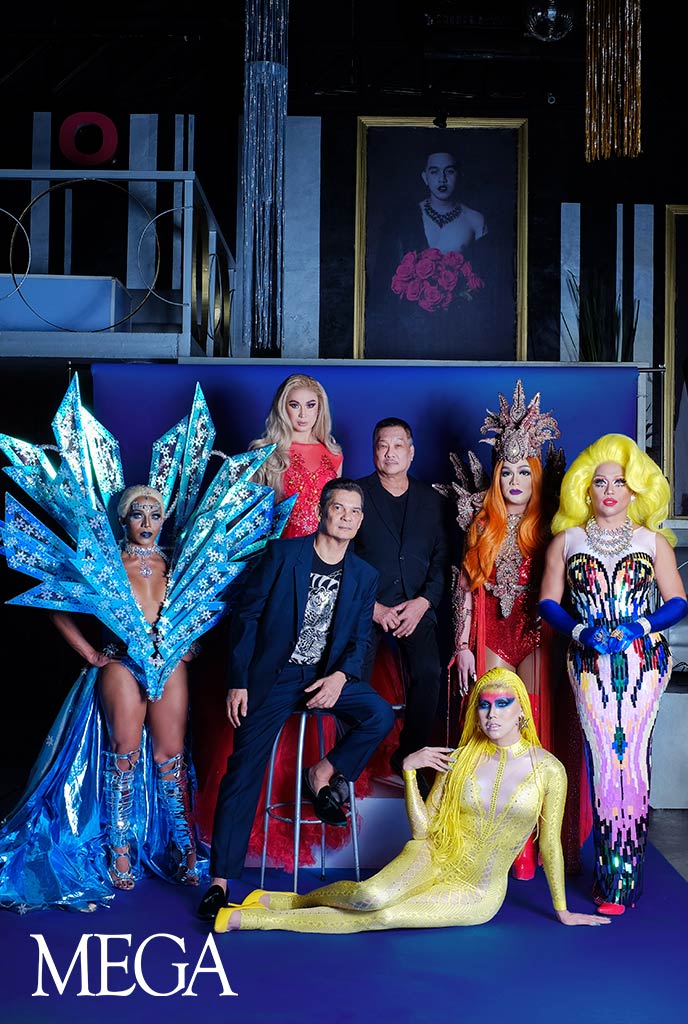
In the nightlife scene, it is extremely fortunate if a bar lives to see a lifeline past two years. It takes a lot of factors, really. But ultimately, it is the fleeting attention span and discerning tastes of an ever-changing market that proves to be a nail in the coffin for establishments like these. There lies the challenge, especially for entrepreneurs who have nothing but the best intentions—that is, whether they even saw themselves as businessmen to begin with.
This is where the story of O Bar begins.
In the unassuming corner of M. Orosa in the glorious Malate in its heyday, a group of friends came together looking for a space to put up a restaurant. Destiny had other plans for them as the only available space was a two-storey building with another tenant (a friend of theirs, too) occupying the second floor. “Though we originally wanted to open a restaurant, we decided that putting up a bar was a better alternative, since most of the restaurants were closing their businesses in the area,” recalls Ramon Papa, Operations Manager of O Bar. “Our goal at that time was just to open a small bar catering to the gay community. We really didn’t have any solid business plans and decided to just go with the flow since none of us had ever owned, much less managed a bar.”
14 years later, and O Bar still stands loud and proud as a paragon of not only the LGBTQIA+ community, but of the metropolitan nightlife scene in general. “It took us almost two years to start being known to the community. We succeeded because we persisted. We knew that we had something different to offer and it would only take time for it to be appreciated,” he relates. “After two years we started doing well. Customers started coming regularly. Presently, we are working on getting a Department of Tourism accreditation, to be the first bar outside of the big hotels to be accredited as a tourist destination.
Mention the word O Bar, or even just the letter O, and you’ll immediately get wind off their biggest attraction—their drag shows. While female impersonators and drag performers are nothing new to our culture, O Bar saw something in it that others at the time saw only as a passing thing. What started out as fortuitous, with a guest (for fans of the RuPaul’s Drag Race universe and its international spin-off, you might know her as Jaja) having the time of his life lip-syncing on the dance floor. Seeing how much fun it brought, the proponents of O Bar thought of putting up a regular show for them and more importantly, sought to legitimize their profession.
“When we started having drag shows in Malate, we realized how hard a job it was. Aside from spending two hours to get dressed and made-up, the drag queen had to memorize lyrics of songs they were going to lip-sing, and also the dance steps of their numbers. We decided then that if we became successful, we would professionalize their work. We would coach them and teach to upgrade their skills and talent,” Ramon explains.
“We also made sure we elevated the art of drag in the country, because the talents we have here are incomparable,” adds Rupert Acuna. “The things they’re doing, you couldn’t even make me do, even in my youth. Even the international acts that come here, they get nervous when they see our queens. They’re that good.”
For many the nightlife is a means to escape or temporarily check-out of the humdrum of the day-to-day, but for Ramon Papa, Rupert Acuna, and the drag queens of O Bar, it is their way of life and their service to their patrons. Needless to say, they not only give the best, but they also give back to the community that has served as their backbone for all these years. “We were the first, and only bar to give free HIV testing. We started this in Malate. We raise funds for the Golden Gays and orphans. We have donated to several HIV awareness and testing NGOs as well.”
So, what more can we expect from O Bar? They remain coy and understandably tight-lipped as both Ramon and Rupert look to the stage where their dances were having a ballet class. “It is pride month after all, and we are making sure we open it with a bang,” punctuates Rupert. A bang always is a good idea right? Count us in.—Angelo Ramirez de Cartagena
She Talks Asia
Luminaries of Female Empowerment
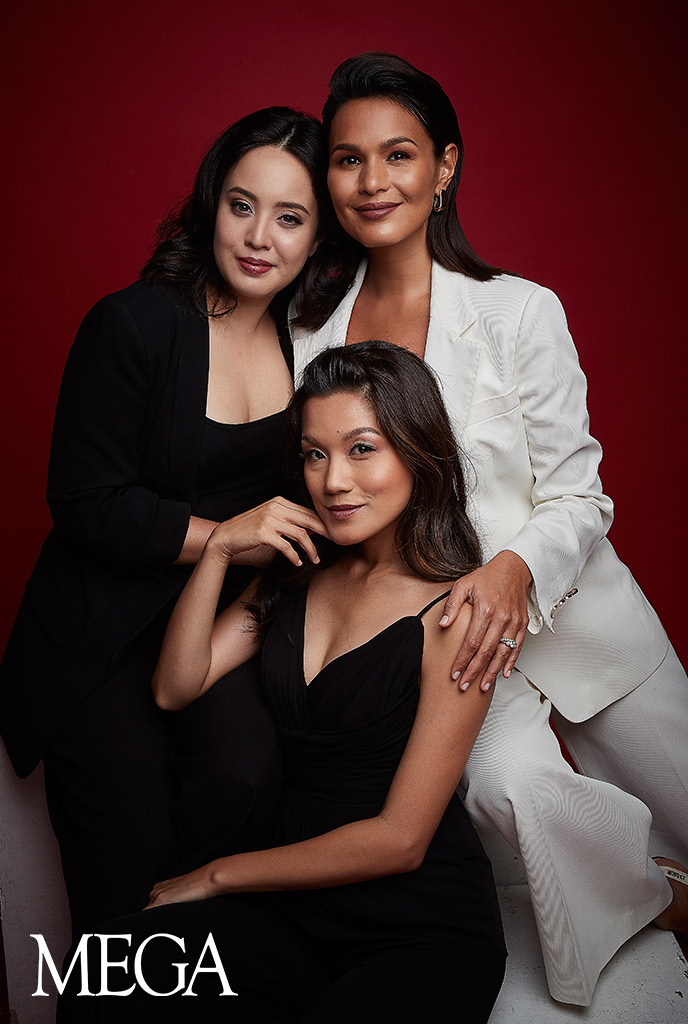
Where does feminism stand in the country?
While this poses to be a question that requires deep thought and concurrent introspection, the necessary discourse gives perspective to how things actually are and why the conversation needs to persists, even in this day and age of presumable liberties. “If you look at the statistics, or if you look at the official numbers, we’re the 8th in the world [in terms of feminism] and I think, the first in Southeast Asia. So, there are small wins that we do need to celebrate. However, because we are number one in Southeast Asia, or number eight in the world, sometimes we can be complacent about the state of women’s rights in the world,” begins Lynn Pinugu, COO, Finance + Operations for She Talks Asia, a community that is attracted by likeness and bound by differences, compelling a dialogue that aim to educate, empower, and inspire people, as well as to better appreciate the role of women and female-identifying individuals in society today. “But that’s not a reality for every woman. The Philippines is still the most vulnerable when it comes to human trafficking, online prostitution, domestic abuse, teenage pregnancy, that being number eight or being number one in Southeast Asia does not represent. Just because we have great laws connecting the rights of women, it doesn’t mean that every child and woman actually gets to enjoy that, doesn’t mean they are protected, doesn’t mean they have the same rights that we have—even the privilege.”
This was the genesis of She Talks Asia, and it continues to be its motivating, driving force each and every day.
“Our intention was to really raise stories and experiences that women went through so that other woman won’t feel alone. So many of the times how women connect in a deeper level is through empathy, it’s when something happened. “Oh yes, me too” or you know, “I completely understand you,” and “I feel you”–That makes women connect, learn to share their own story, and listen to each other’s story as well. So, She Talks Asia pretty much put together a platform that the woman’s individual voice is to be heard. In that way, it really resonated to the audience, because we felt like the women here are already feeling a lot of these things,” furthers Vicky Herrera, Director of Brand Partnerships. “Of course we are grateful for all the challenges that we encountered in life when we were younger, but one thing we realized is that, we wish we had more women to seek guidance from. And that’s how we envisioned She Talks Asia. Actually in the beginning, it’s like the big sister whom you can ask all the questions you want to, can give you advice from heartbreak to career choices, to dealing with your body issues, for example,” continues Lynn.
Together with Sarah Meier (CEO and Creative Director), Iza Calzado (PR and Marketing Director) and Bianca Gonzalez Intal (Digital Content Director), Lynn and Vicky turned She Talks Asia into that conduit where the woman not only takes center stage, but also acknowledges improvement to reveal their best selves, which in effect will bleed into an improvement of society. Through building programs and platforms that are anchored in education, dialogue, and community, She Talks Asia weaves stories, summits and conferences, and modules and mentorship to navigate through personal issues and challenges, which will hopefully reveal their best selves and produce leaders, innovators and individuals that will forge a better life for the world to not only live, but thrive in.
The conversations and stories have always been there, but for She Talks Asia, it’s time to kick it into high gear and take things a step further, because really, there is no better time to talk about things like this than it is now. —Angelo Ramirez de Cartagena
Cory Vidanes
Epitome of True Women Leadership

What makes a great leader?
Threshing this obliges many a steadfast stakeholder in a workforce to draw out a checklist that will, based on a greater common denominator, include talent, tenacity, and tenure, as well as confidence, charm, and a necessary courage. Many things for many people, it becomes clear as the conversation persists that instead of chasing a near-impossible beacon of authority, one will ask: What makes a leader effective?
More than just sitting atop a chain of command, this figure of guidance transcends mere leadership when subjected to a trying circumstance that compels one to take an informed and intuitive decision that will benefit not just one, but the greater good of all concerned.
“I believe an effective leader takes responsibility for decisions and actions, has the passion to deliver on commitments, and fulfills a mission that will better the society. In ABS-CBN, we are driven by our mission to serve and improve the lives of as many Filipinos. We do this by creating relevant content and experiences that give joy, hope, empowerment, and inspiration. Our stories mirror the dreams and triumphs of the Filipino,” explains Cory Vidanes, COO of Broadcast. “It is my responsibility to make unique, creative, and skilled individuals work together to achieve common goals and stay true to our mission. I value our people and the collective effort of the team.”
Handling broadcast of media conglomerate, ABS-CBN is daunting by any stretch of imagination but for Cory, “It is a sense of duty to the company, the people I work with and the audience we serve. I am blessed to belong to a company that takes good care of our people. We continue to nurture the best talents, develop skills, and build high performing teams to create engaging and meaningful content. Our deeper knowledge and understanding of the audience has given us the opportunity to help address their needs and serve them better.”
Listening to Cory Vidanes is not only enlightening and illuminating, but most importantly, inspiring. Compounding the honesty and genuine desire to serve the Filipino people is the fact the she knows what she’s talking about having gone through the rigors of the industry 37 years ago as a Production Assistant. “It’s been hard work from the beginning. My journey started with personal goals and evolved to a mission as I found my deeper sense of purpose in ABS-CBN, to be a selfless servant of the Filipino,” she says. “I will forever be grateful to ABS-CBN for reinforcing my values and my calling to serve as I give all the glory back to God.”
When it comes down to it, Cory Vidanes accounts her success in the network she has held guard for 33 years, to the stories of the Filipino. “The stories of resilience and courage, empowerment, and strong faith in God, love for the family and community. Ang kwento namin ay kwento ng bawat Pilipino,” she says winding our conversation down. “Creating excellent programs is a passion. To give Filipino talent an opportunity to take center stage and make their dreams a reality is fulfilling. Connecting the Filipinos worldwide to home through our content and experiences is both empowering and humbling. Public service is at the core of everything we do as we strive to make a positive and long term impact on the communities. The 65 years of ABS-CBN is a tribute to the Filipinos who inspire us to do good and serve with love.”
And in essence, this strong grip on the hearts and spirit of the people is what makes Cory Vidanes not just a great and effective leader, but an illuminating one that will continue to light the way for this and many more generations of ardent television and multimedia audiences to come.—Angelo Ramirez de Cartagena
Careless Music Manila
Individuals Redefining Original Pilipino Music
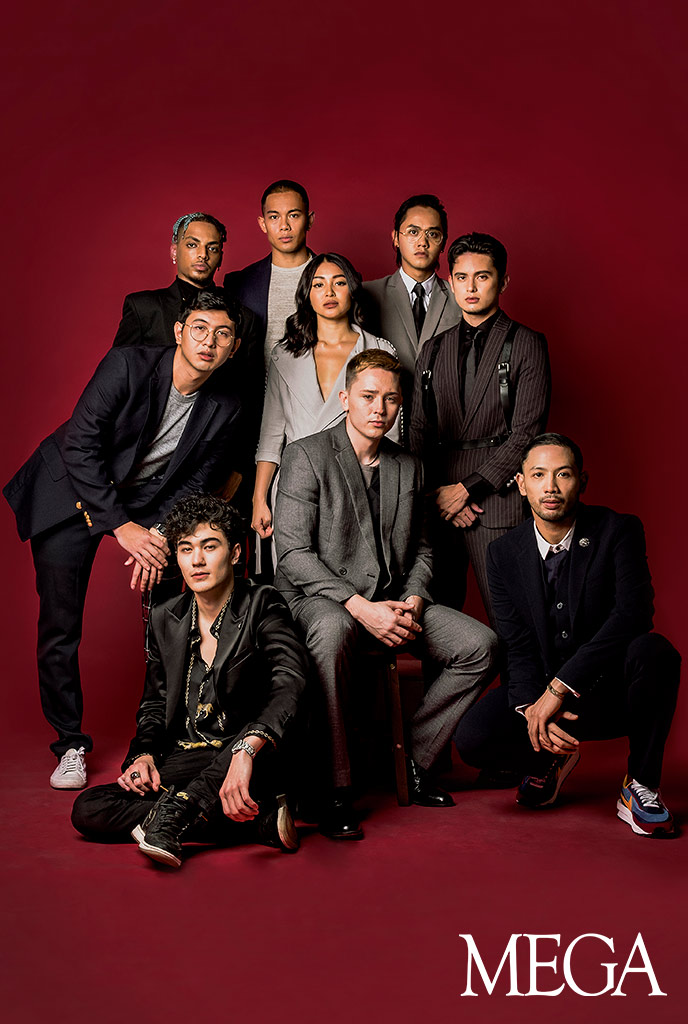
“We first created the label for me to release my first album, Palm Dreams,” shares James Reid when asked about what drove him and Bret Jackson—also known as KINGwAw—to create Careless Music Manila. More than just a simple passion project, it has soon turned into a statement, with its members inspiring individuals to be their most authentic selves. “Before I made that album, it wasn’t possible for me to make the kind of music I make now,” he adds.
Made up of a group of passionate, talented young individuals, Careless Music Manila is OPM’s next big thing. “I’d say Careless is a mainstream platform, but it’s not about someone’s looks or their number of followers. It’s about their passion, their fire. We’re allowing artists to make the kind of music they want to make,” says a self-aware Jackson. In fact, you may already be familiar with many of their members: Nadine Lustre, Curtismith, Nix Damn P, Narez La Fuego, AstroKidd, Luke Thorsen, Jeriko Tan, Zon Lee, and Messiah.
The list of artists doesn’t stop there. If you think Careless is exclusive to their circle of friends, you’re mistaken. While it started out with people Reid and Jackson were close to, they’re constantly on the search for new talents. “We want to reach out to more people around the Philippines. Bret has actually reached out to artists from places like Davao and Cebu,” Reid shares.
“I think it’s the best time it has been in a while for OPM,” states Jackson. “For a while, there was a dip where not much was coming out. But right now, there are so many talented groups and artists who are doing their own thing. This change is scaring a few of the bigger companies, but I don’t think they should fear the change; I say, embrace it.”
What’s next for Careless, one might wonder? “We’re actually about to release our second mixtape. It’s our biggest project so far, with 24 artists in total,” Jackson excitedly shares, prompting an air of excitement around the other members. Clearly, they have only just begun.—Marella Ricketts
Angkas
The Transportation Innovator
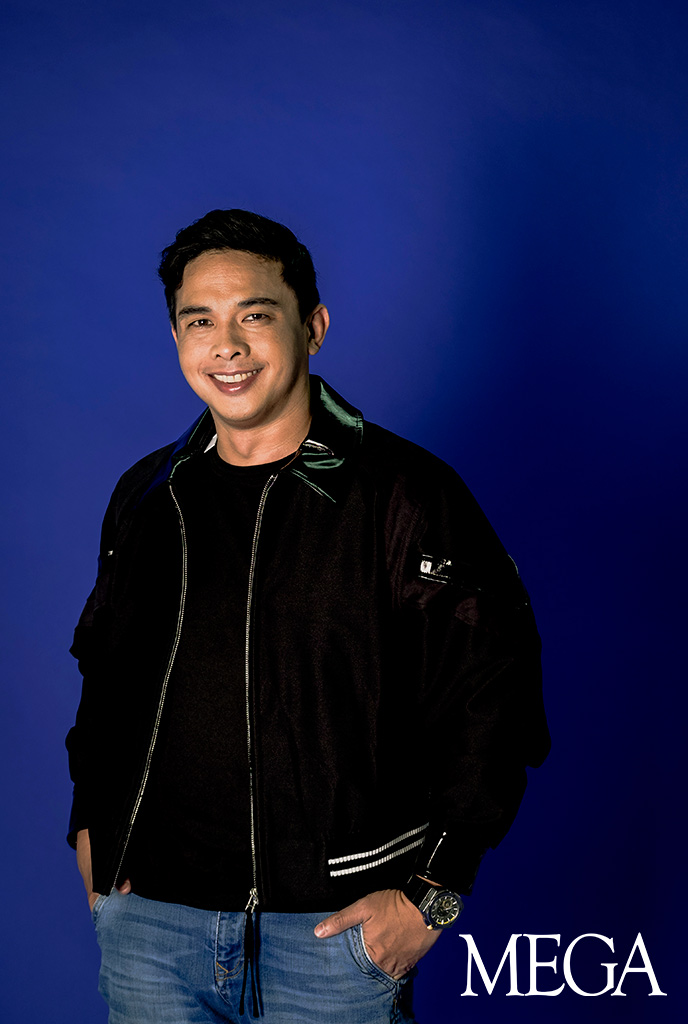
George Royeca is no stranger to conflict. As the head of regulatory and public affairs of motorcycle-ride hailing application Angkas, the man has had his fair share of unpleasantries. But time and time again, the app has proven to be essential. Just almost a year after it had first launched, it grew to be the top motorcycle-sharing service in the Philippines, giving opportunities to both its drivers as a means of livelihood and passengers looking for an alternative mode of transportation to navigate the dense Manila traffic.
Majority of the reason why Angkas has been faced with such controversy is the reputation of motorcycles here in the country. “Information is everything,” Royeca starts as he talks about how one can combat stigma. “Not a lot of people know that while there are 1.5 million cars in the country, there are 14 million motorcycles. They’re simply more affordable, and if you think about it, there isn’t a proper system to educate individuals who purchase motorcycles.” Having said this, he explains that Angkas takes safety very seriously, failing up to 70 percent of drivers who apply for them.
When asked about how he thinks application-based transportation services such as Angkas helps Filipinos achieve their own sense of freedom, his answer is simple: “Time. My time is important, your time is important. We’re really chained by the congestion and the traffic in this city, with so much time being wasted. Imagine hopping on an Angkas and knowing you’ll get to your destination sooner. That, to me, is a very liberating experience.”
While he might be used to having interview after interview, Royeca’s words are still heavily tainted with passion whenever he talks about Angkas. “The more transportation options there are, the better. Again, it’s not just our company’s fight; it’s everybody’s fight,” he shares. “More than just transportation options, we need to have walkable cities—proper sidewalks, parks, trees planted all around. My dream is that we get to be that kind of city, you know?”—Marella Ricketts
Paolo Valenciano
Millennial Concert Maestro
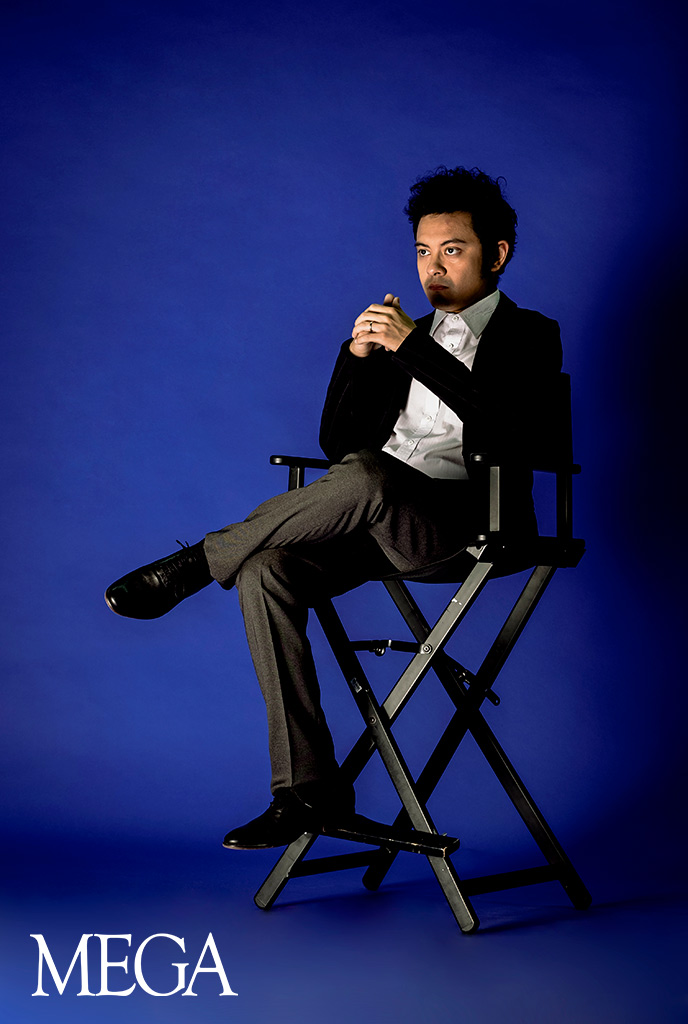
It was not too long ago that Paolo Valenciano chose to pursue directing full time over his music career. This, to him, was a slow, frustrating process. “It was a painful decision, because I enjoyed performing as well. But over time, it became clear to me now what my calling is,” he says earnestly.
A unique struggle of being a celebrity offspring is finding a way to step out of your parents’ shadows. As the eldest son of Gary Valenciano, the director shares that there was a lot of pressure working in the same industry as his family, such as the inevitable comparisons one would face. “When I was performing, nothing much was happening for me. But I noticed that I would have these ideas that really worked for much-established artists,” he says. Soon, he realized that he could use this experience of his as his strength: “Because of my exposure to the industry at a young age, it helped me understand things, such as how to conceptualize a show or an event, or how to work with artists.”
“My first big break was working on a concert with my friend Jericho Rosales. We got a standing ovation and even if I wasn’t on stage, simply being able to contribute that gave me such a rush. It was clear to me what I wanted to do for the next chapter of my life,” Valenciano shares. Since then, he has successfully worked on concerts, music festivals, and events, including this year’s New PH Ball.
Valenciano has showcased his talents both in front of and behind the camera, with the latter being his much-preferred choice. As he talks about his work, it is clear that directing has given him a greater sense of humility. “When we do these concerts, I don’t want people to think that everything was all my idea. I feel like when you do these big projects, it should be the vision of the team collectively, not just one person,” he says, adding that he encourages everyone on the team to contribute and voice out their opinions. “I want to put something together that will communicate with as many people as possible,” he adds.—Marella Ricketts
Vern and Verniece Enciso
Social Media Entrepreneurs
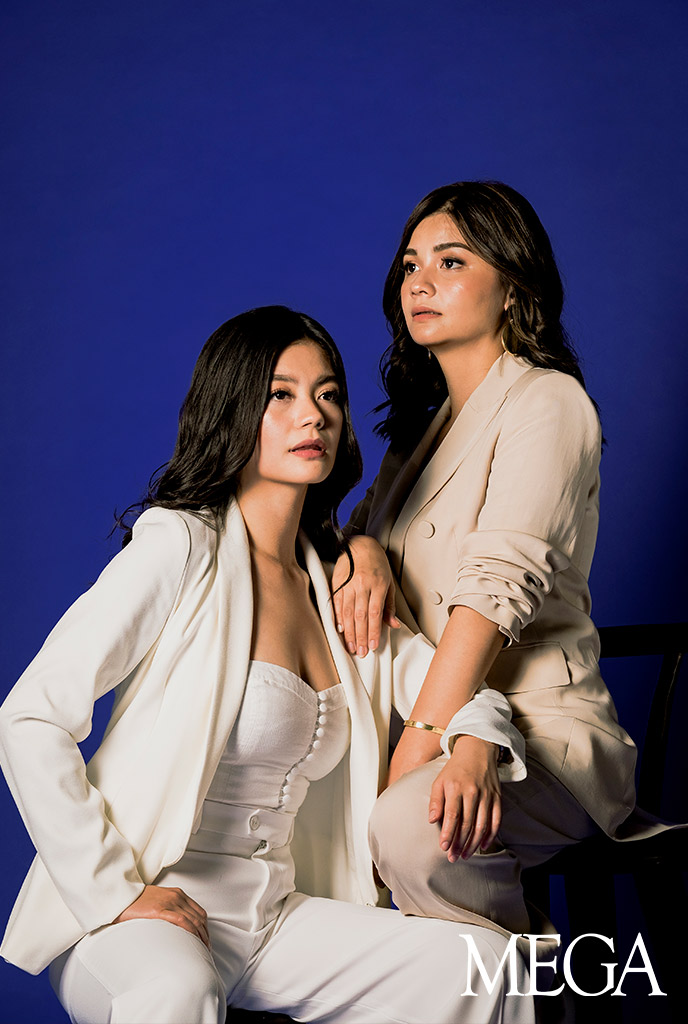
At this point in their career, it seems inadequate to simply call sisters Vern and Verniece Enciso influencers. “True influence goes beyond someone posting about their travels or their purchases. It’s about being an example by choosing to follow your dreams. The term ‘influencer’ is a term people take lightly nowadays and that shouldn’t be the case,” they tell me.
Both Vern and Verniece didn’t expect to be where they are today. “I always thought that I never really excelled in anything. But once I found blogging, I realized that my love for writing could take me places. It was my journey to self-love,” reveals Vern. Her younger sister Verniece soon followed her example: “My life used to revolve around ice skating. But once I saw my sister turn to blogging, I was inspired to take that risk as well.”
When asked about how work is different now compared to then, they said that there is a big difference. “Right now, you need a lot of self-awareness and humility to stay true to yourself,” they start, adding, “It can be an everyday struggle to reinvent yourself and stay relevant, with you wanting to do everything you can to maintain your following. You have to hold on to your values to make sure you’re still proud of the person you see in the mirror.”
In addition to their blog, the sisters have also recently gained success through their perfume line, VV & Co. “The biggest lesson we’ve learned this year is how to run a business. Dealing with suppliers, finding the right people to trust, running numbers—those are just some of the challenges we dealt with for the past six months,” they tell me, adding, “Working with your best friend has made things so much easier. We know each other so well.”—Marella Ricketts
Sudar Khadka
Architectural Trailblazer

Local communities have long been indifferent towards the importance of architecture. It’s never seen as a basic necessity and ultimately gets pushed aside for things that the community believes are far more important. But Sudar Khadka has been building partnerships for the betterment of local and overseas communities, helping them understand the importance of architecture but bringing the practice to the people.
Working with partners and communities has allowed Khadka to effectively let the locals practice architecture themselves. One of his most profound works is a collaboration with Streetlight, a Norwegian-founded NGO that supports local children and their families. The architect and Streetlight Philippines rebuilt structures they have lost during the Typhoon Yolanda (Haiyan) like the local orphanage and community centers. “During our collaboration with Streetlight Philippines and the local community of Tacloban, we learned that in the long run, those things matter a lot,” Sudar explains pertaining to the structures that have long been pushed back as secondary needs for the community. “At the end of the day, while we were doing the process for the community—collaborating with them—over time, they are effectively becoming architects; so they are concerned about the same things that we had our concerns for.”
To the architect, working with communities is a learning process for him and for the community. While the community begins to appreciate the value of architecture to their betterment, the architect adheres himself to the values that the community has placed on its people and space. With architecture considered as an intricate foundation of any structure, it is important for an architect to impart their knowledge to the locals to be able to grasp at least the baseline idea of what it really means.
Creating a deeper connection to the people and their environment are Sudar’s top priority when working with communities. “If we do not respect it, if we do not know what it is worth, then we get a city that is unsustainable.” To him, the true meaning of sustainability relies not only upon materials used but to the value architects put on the space he works with. “I think materials inherently are inert. So, they are neutral. It’s how you use them that really makes powerful. I think the value of sustainability there is that we are able to get you to the value of space. Let’s say bamboo; it’s obviously a sustainable material… or so people think! If you use it all to build—let’s say—a gigantic mansion only to cater five people, is that really sustainable? Even if it’s built with bamboo, it’s not. It’s really not good for the environment,” Sudar explains. With architects like Sudar, more and more people will get to understand what makes a really good, sustainable and sound structure and all these can be done with a basic comprehension of the practice.—Francesca Testa
Bang Pineda
Celebrated Fashion Rule-Breaker
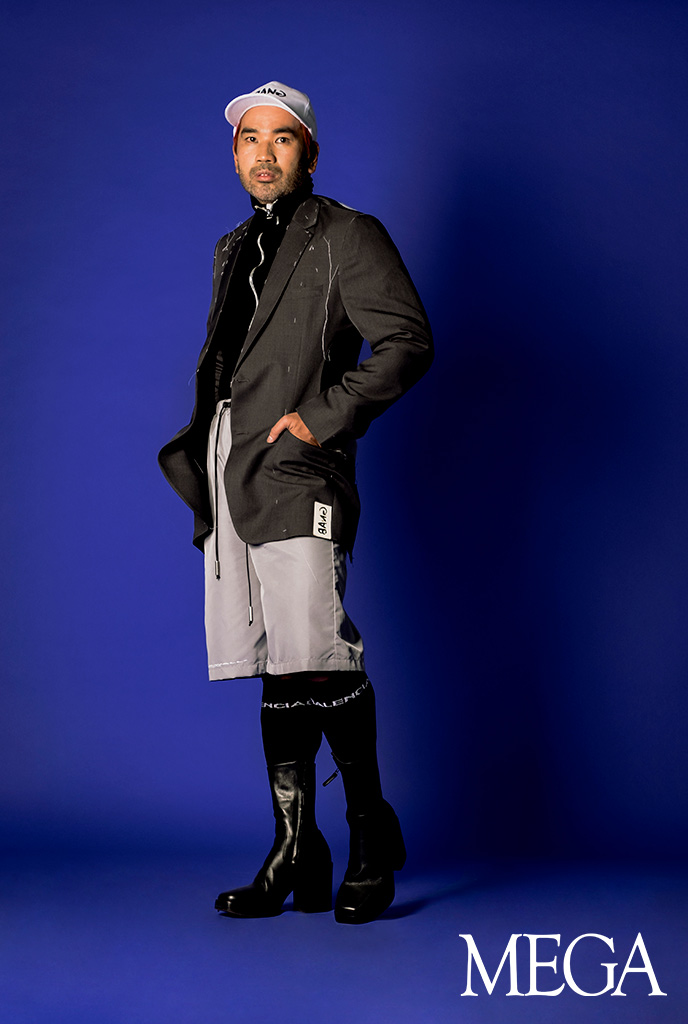
In an age where uniformity is beginning to take over generations after generations, Bang Pineda challenges everyone to take their fashion statements on a different level. Streetwear has been the ultimate trend for quite a while. The level of comfort streetwear offers is at par with its aesthetic—not to mention, everyone has the freedom to alter their styles and not a single person in the streetwear community would judge. Bang Pineda harnesses the freedom streetwear offers as he creates designs that stand out from crowds.
Pineda would describe his core as a designer to be streetwear; this was long before the term was even coined, during his humble beginning. “In general, Bang, the brand, is very streetwear. “You would see hints of sportswear, leisure, and all that.” The Bang aesthetic can be seen in a lot of celebrities like Sarah Geronimo, Nadine Lustre, and James Reid to name a few. These designs often come with the logo anyone could recognize from everywhere.
While Bang admittedly still patronizes international streetwear brands like Balenciaga, he loves to wear one that’s his own. “I still wear my own, because I believe my brand.” The wearability of Bang Pineda’s design doesn’t sacrifice the personality it has. To Bang, anyone who wears his designs would feel effortlessly edgy and his market doesn’t only span the celebrities that cater to his aesthetic. “I have a market doon sa age ko; I am 40. And then I have the millennials,” to which his celebrity market falls. “Then I have the younger generation also — the Gen Z.” With this huge market he has been designing for, Bang has come to the realization that streetwear is for everyone. “My clothes are genderless — wherever you fit, yun ang suotin mo.”
In an upcoming annual show, Bang will take on ‘freedom’ to the next level. Titled “Liberation”, Bang will present a hundred-piece collection for all. The genderless pieces, much like his past collections so to speak, will enable its wearer to feel liberated to be whoever they aspire to be.—Francesca Testa
Pride Movement
Catalysts For Change
Whether one is a spectator from the sidelines or an assimilated and acclimated stakeholder of the community, pride will reveal itself to be more than just a mere manifestation of singularity. While the personal is very important, as it does form the backbone of everything from preferences, privilege, and points-of-view, the full effect of pride becomes clearer and more effective when people come together towards a common goal. Aside from it being a show of numbers to the grotesquely large chunk of the world that still needs educating, this unity of individuals, who are at a given point in time bound by difference and circumstance, is a progressive standpoint that is both a celebration and a protest.
Rooted in resistance, pride is a community in action. It isn’t just a parade of colors and personalities; it is a vocal and visual demonstration that puts forth, among many things, advocacy and equality. From the first brick thrown at Stonewall in 1969 to the fiercely discussed first pride march in the Philippines in 1994 (which saw the pioneering figure of Fr. Richard Mickley already on the frontlines of movement), the message has been clear: the LGBTQIA+ will no longer stand to be relegated at the sidelines of society.
For the past few years, there has been a stronger call for unity from the local LGBTQIA+ community, with the pride march increasingly growing in numbers over the years. Last year alone, the Pride Movement has charted around 25,000 participants at the Metro Manila Pride March aptly themed: #RiseUpTogether.
A collective of communities, associations, and individuals, as represented in the photographs by the leaders through the years of various LGBTQIA+ human rights movements, the Pride Movement is a volunteer-based, non-profit organization that “creates safe, affirming, informative, educational, and empowering spaces for LGBTQIA+ people in Metro Manila.” Meaning, the scope of their service extends its reach beyond the culmination of pride month at a spectacular, emotional, and inspiring march at the end of June. The organization also necessitates SOGIE discourse and conversations, as well as continues the fight well after the euphoria of the march settles to equilibrium.
This year, Metro Manila Pride is hard at work with the pride march (dubbed: #ResistTogether), which is set to be held at the Marikina Sports Center on June 29. Rousing as it is, they know that there is much work to be done, which is why they are ensuring that this year’s pride march compels greater compliance to the cause, and not just it being a one-time thing. While there are many, many miles to go before tolerance becomes acceptance, and alliance matures to actual equality, we cannot be swayed by this apparent dismay, but rather, use it as a driving force to further optimize the plight and movement, especially here in the Philippines. By gathering together once again, it is the goal of the Pride Movement that we get to show the world that we are not just loud and proud, but that we aren’t going anywhere, because we are human beings, too, and we deserve a life replete of protest and resistance.
Through these efforts, as well as the revolutions sparked by valiant and brave Filipinos before us, the hope still lies that the LGBTQIA+ community no longer has to march. In its stead, the dream is to be able to walk freely without fear, just as the of the country and the world are accorded such liberties. But until it actually gets better, we will keep on marching.—Angelo Ramirez de Cartagena
Gabbie Sarenas
Fashion Innovator
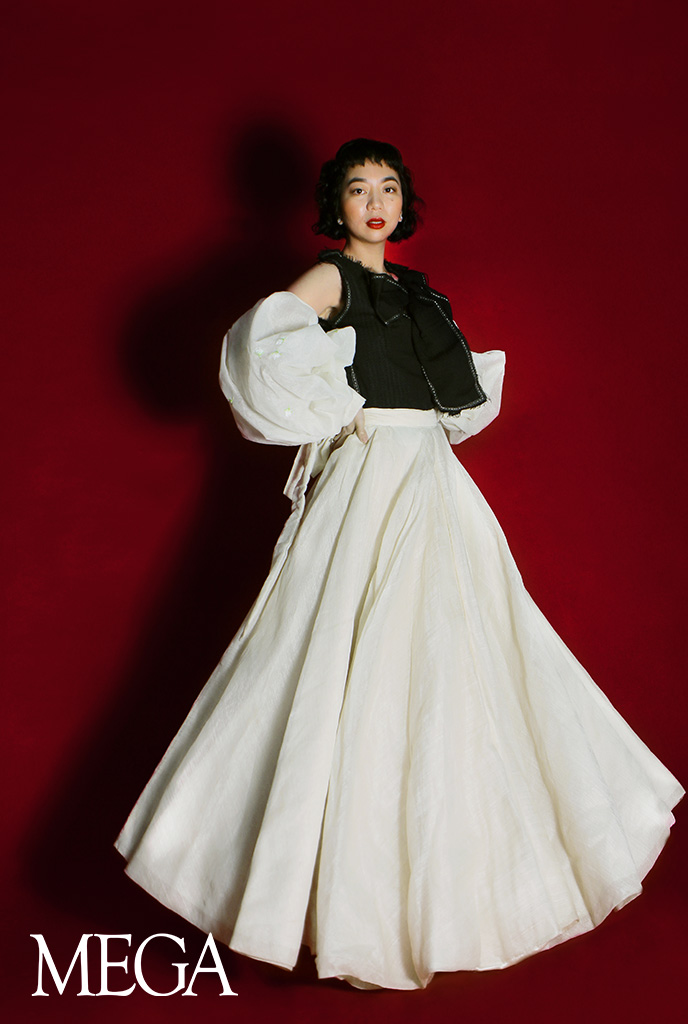
Long before her assimilation and ascendancy in Filipino fashion, as well as her lifelong fascination for her perennial muse, the binibini, Gabbie Sarenas was already in the process of penning her love letter to the Philippines.
“Who are we?” she would begin these letters, thinking from a point-of-view of the country in general. Fueled by conviction and an ever-growing curiosity, the designer who once dreamt of becoming an archaeologist would eventually dig through our rich culture and storied heritage to mold not only a fashion identity, but a personal one as well. “Being an archaeologist is one of my dream jobs. I just get scared of small spaces,” she confesses. “I realized that what I do is my own way of being an archaeologist mixed with my own interpretation. I always make it a point to keep designs mostly traditional. I am rooted to design heritage. I may put some contemporary details to it, but you can really see where it comes from.”
There is an distinct sense of romance and an articulate nostalgia to the works of Gabbie Sarenas that respects the rigors of a time gone by, but also challenges it in a way that a more contemporary mindset will appreciate and dare we say it, call it cool. “How do we make it tangible enough to hold, see, hear, touch and internalize all of these information? I am so curious about who we are even before the Spanish came to our shores—our language, our daily habits, forms of display,” she says of bridging wistful sensibilities to a generation that is for the most part, detached from the hemlines of a time that has in essence, formed who we are today as individuals and as a nation. The thrust of the brand is to immortalize Philippine creativity through three elements: fabric, embroidery, and story. Each element tells a story— traditionally and from our own perspective or interpretation. It is my kind of art that is part of how we grew up and my fascination with how artists tell their story—grace without fear.”
More than just style in the s trictest definitions, Gabbie Sarenas is redefining what it means to be makabayan by donning Filipiniana fashion beyond formalities and special occassions. For the young designer, it is not only an armor we put on or a form of self-expression, but rather an extension of our collective and personal histories. “The journey is something enriching each and every time. It is becoming more personal each collection or series that we bring out. It is also a piece of me that people wear—be it my (former) insecurities (I used to be insecure of my arms), my taste (love bows, volume, easy and quiet luxury), my loves (one series is dedicated to my dog), or a moment of my life. It is my conversation with the Philippines and my audience. Another is that I get to learn from different Filipinos. Learning from different communities of what they know and why they do what they do is an honor—be it because they want to take care of their children or they want to keep tradition alive. Each one has the will and reason to make. It is a learning experience that wakes me up and empowers me to a better person and designer.”
Whether it be in a silhouette or narrative, Gabbie Sarenas has always been conscious of making her brand as Filipino as it can, especially when it comes to textiles. “The goal of the first capsule collection that we did is to show that the piña is not just for special occasions. I do understand as to why it was such. Ever since Day one, we have included piña in our collections—piña shifu (piña and abaca), piña cotton, piña linen, piña bamboo. Piña is a luxury fabric that is uniquely Filipino. No one in the world can do this weave except for us. The finesse and technique is present,” she explains. “I am completely fascinated with it and have a lot to learn with its tradition, rituals, and origins. It is our job, as designers, to innovate, but never derail the foundation of tradition. Our identity is in the details. According to the research of Marian Roces-Pastor, we have this “malasakit sa detalye.” Our quality and eye for detail is part of who we are since the beginning. I intend to keep our culture alive and hold it to the future.”
Admittedly for the designer, there is still a long way to go before this generation and the ones to follow will fully embrace the fashion and history of the Philippines, but all hope isn’t lost. With an unbridled sense of optimism, Gabbie Sarenas is confident that while there are more strides to take, there is at least a growing movement to adhere to our roots and identity more than ever before. “I love that more and more people are asking questions and educating themselves. Curiosity is brewing! Maybe not totally evolve style-wise, but I do hope that we all challenge ourselves to innovate that is contemporary (here and now) yet respecting the culture and what it upholds,” she says. “Know the story, know who makes it, and preserve it.”
Very well put, binibini.—Angelo Ramirez de Cartagena
